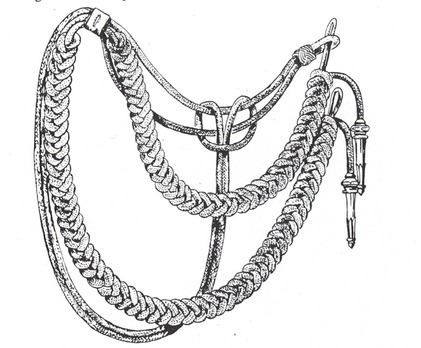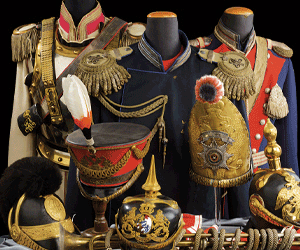Diplomatic Corps Dress Aiguillette
SKU: 34.GOR.03.02.04.001
Estimated market value:

Estimated market value:
Attributes
History
The Diplomatic Corps was made up of officials (civil servants) of the Foreign Ministry. This ministry was taken over in 1938 by newly appointed Foreign Minister Joachim von Ribbentrop who, for the first time, introduced specific Diplomatic Corps uniforms. Prior to 1938, there had been no defined uniforms for members of the Foreign Office.
Prior to the war, the Foreign Ministry was heavily involved in the annexation of Austria and the Sudetenland. During the war, some conquered territory, especially in Poland, was incorporated into the German Reich, while other territory was merely occupied. These countries, while officially still independent, were in reality administered by German officials of the Diplomatic Corps, and in some cases also German-approved puppet governments.
It is important to remember that the officials who served within the borders of the German Reich weren’t of course part of the Foreign Ministry, but rather of the Ministry of the Interior. However, the officials of both these ministries wore nearly identical uniforms.
Officials of the Diplomatic Corps were distinguished by rank as well as their educational level. The latter determined which kind of “Laufbahn” (career) an individual was able to choose. The “Höherer Dienst” (Higher Career) required a university degree, the “Gehobener Dienst” (Elevated Career) required a college degree, the “Mittlerer Dienst” (Middle Career) required a highschool degree, and the “Einfacher Dienst” (Lower Career) required a grade school education, to put it in a simplified way. Additionally, the Higher and Elevated Careers included several different pay groups.
Uniforms for the Diplomatic Corps were first introduced in 1938. They underwent near continuous modification between then and 1943.
The Dress Aiguillettes were worn on the Diplomatic Officials’ dress uniform tunic.
The 1st pattern of these aiguillettes mirrored the Army’s Dress Aiguillettes, and they were introduced during Hitler’s state visit to Italy in 1938. The 2nd pattern aiguillettes were instituted in March 1940.
Both aiguillette patterns are silver-coloured. The 1st pattern aiguillettes feature two braided cords that each end in ornately decorated metal “whistles”. These aiguillettes are attached under the right shoulder board and under the lapel.
The 2nd pattern aiguillettes feature a single double-braid cord ending in two metal “whistles” with ornate designs. They attach via a button to the right shoulder and under the lapel.


Comments
Sign in to comment and reply.


Scroll Top